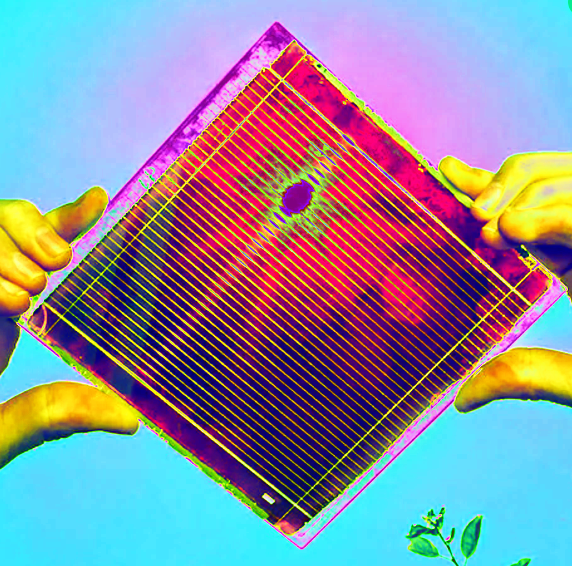Solar tech turned to toxins
 The technology behind solar panels is being adapted to detect deadly toxins.
The technology behind solar panels is being adapted to detect deadly toxins.
The world relies on strictly-controlled chemicals for agriculture, industry and other daily activities, including fumigants like methyl iodide, which is used to control insects and fungi. The wrong amounts or incorrect use of these fumigants can be harmful to people and degrade the ozone layer.
But methyl iodide is invisible and does not smell, making it hard to tell whether there are dangerous amounts present.
Until now, the best way to test for it was in a laboratory using expensive, complicated equipment, which is not practical in many real-world settings. Some cheaper, lightweight detection methods have been tried, but none have had the sensitivity or are rapid enough to deliver results.
But now, researchers have found a way to detect methyl iodide through changes in colour, with – for the first time – the accuracy, flexibility and speed necessary for practical use.
Importantly, this new sensing mechanism is versatile enough for use in detecting a wide range of fumigants and chemical warfare agents.
The Australian experts borrowed some new technology for improving solar power – synthetic nanocrystals based on a perovskite structure – and turned it into a detection method.
Their approach relies on the fact that these highly fluorescent nanocrystals react with the fumigant causing a change in the colour of the light they emit.
The presence of methyl iodide causes the nanocrystal emission to shift from green to yellow, and then on to orange, red, and finally deep red, depending on the amount of fumigant present.
“Perovskite nanocrystals have proved to be a very efficient light emitter,” lead researcher Dr Wenping Yin from Monash University said.
“Here we showed that methyl iodide can react with such perovskites, and do so very quickly following a simple chemical activation step. Critically, this activation step cuts the response time of the sensor from a few hours to just a few seconds.”
In this process, the ions forming the nanocrystals change quickly when they are exposed to the methyl iodide triggered by a chemical reaction.
The reaction involves exchanging bromide with iodide within the nanocrystal itself, which results in the colour change.
Ultimately, the researchers have been able to demonstrate that the change in colour is dependent on the perovskite nanocrystal and methyl iodide concentrations.
“Although the chemical mechanism is very complicated, the outcome is just a colour change of the light produced by the nanocrystals, which is very easy to detect,” Dr Wenping said.
The new mechanism has the widest range, highest sensitivity and quickest response ever achieved for a technique that does not rely on expensive laboratory instrumentation. It is able to produce results in around five seconds at room temperature.
The researchers hope their findings will provide a platform for building a test device that can be used in real-world applications.
A paper on the developments is available here.







 Print
Print